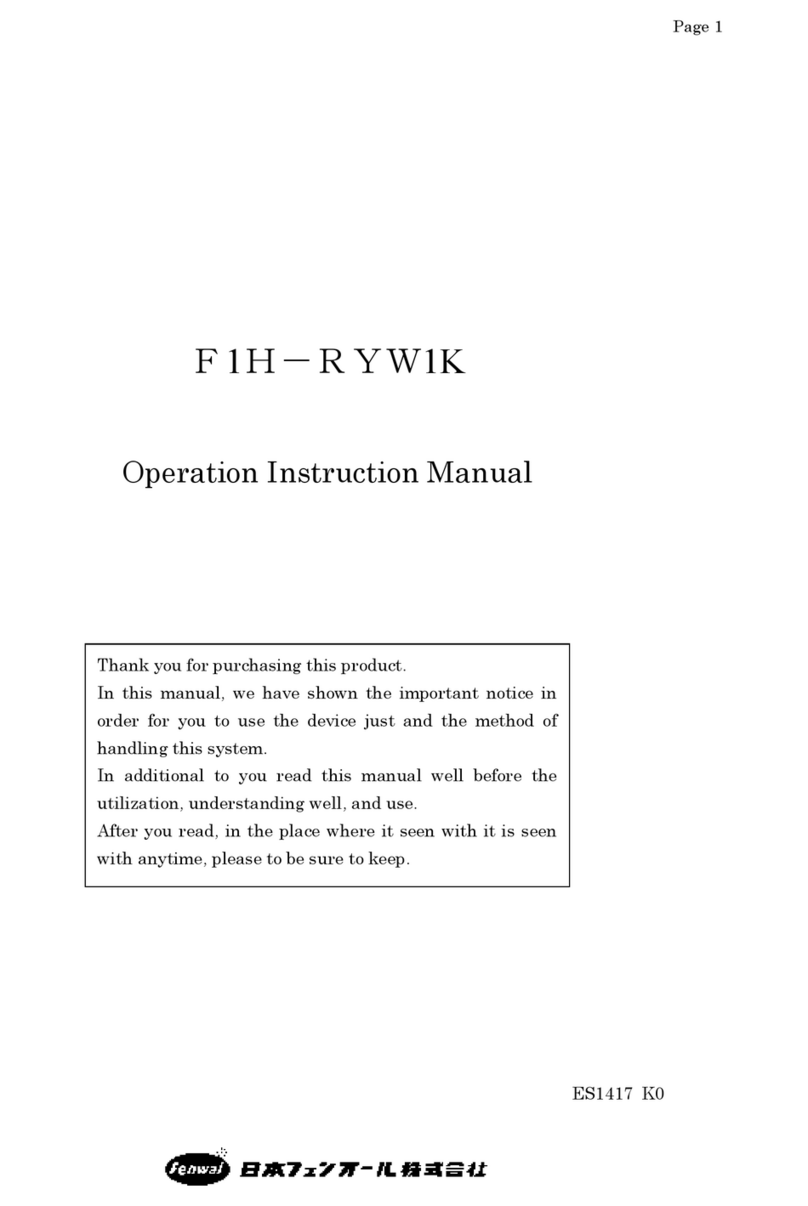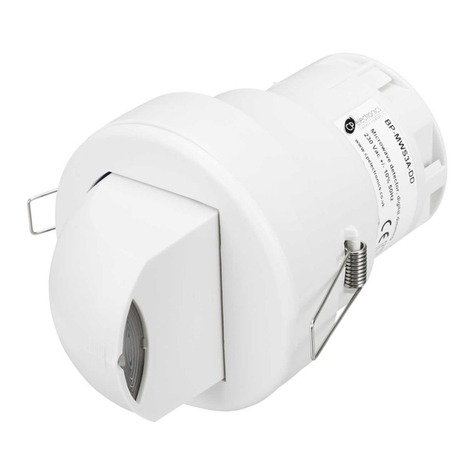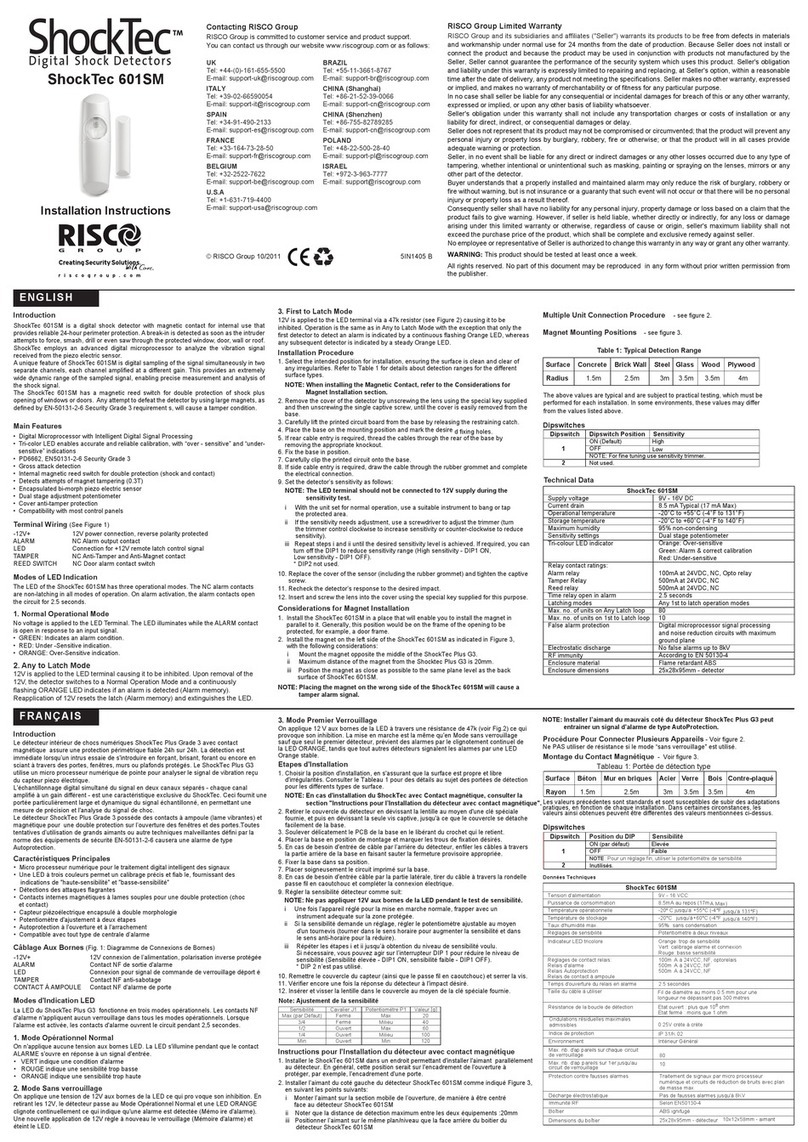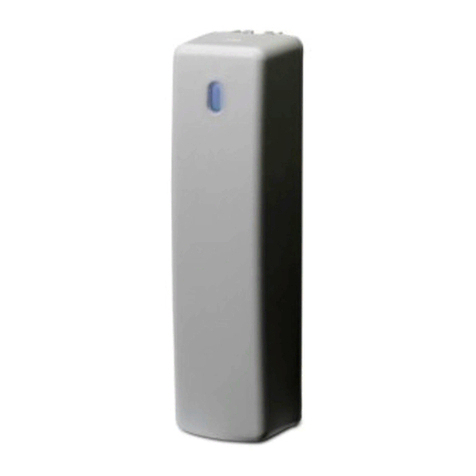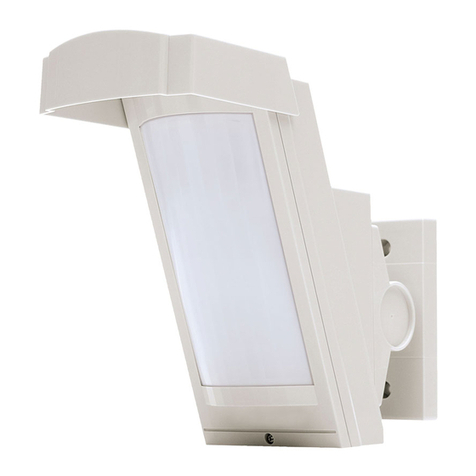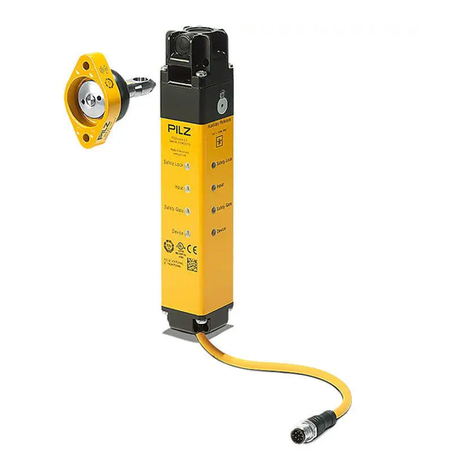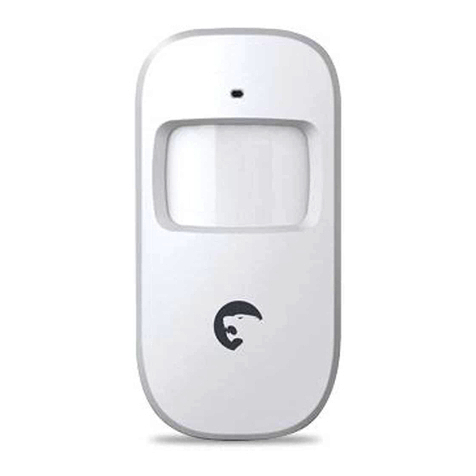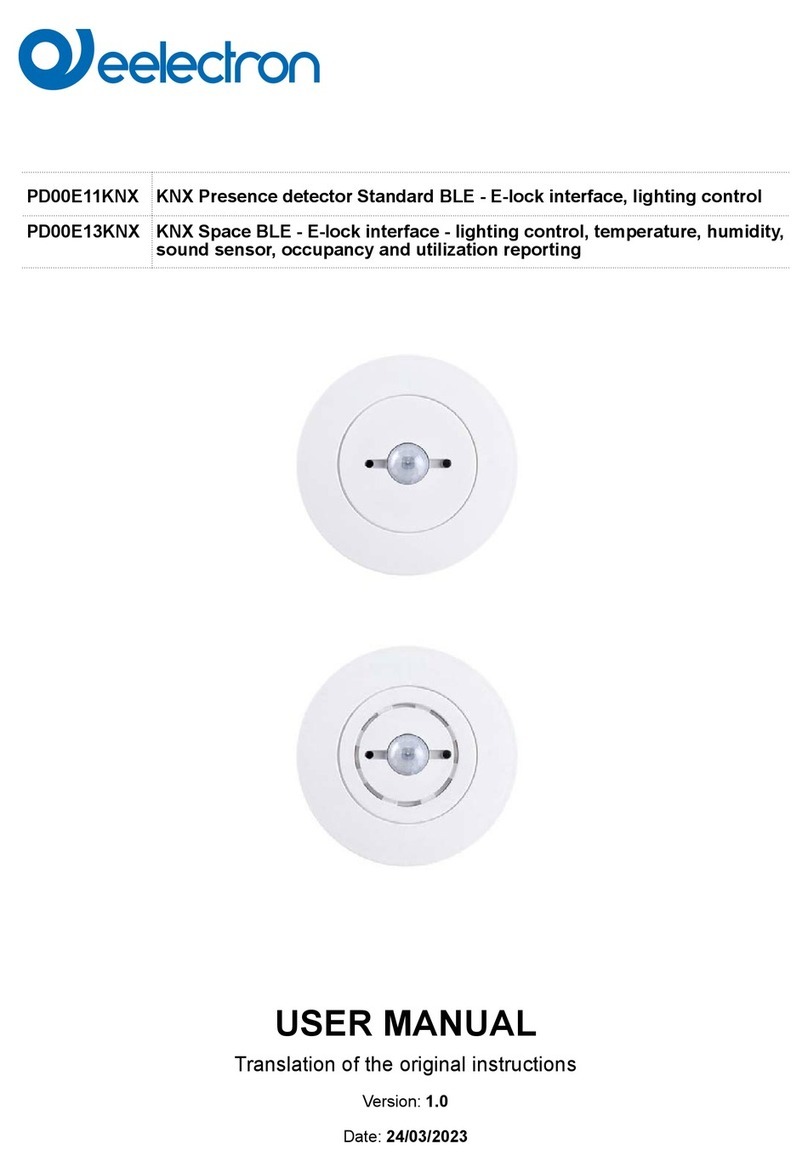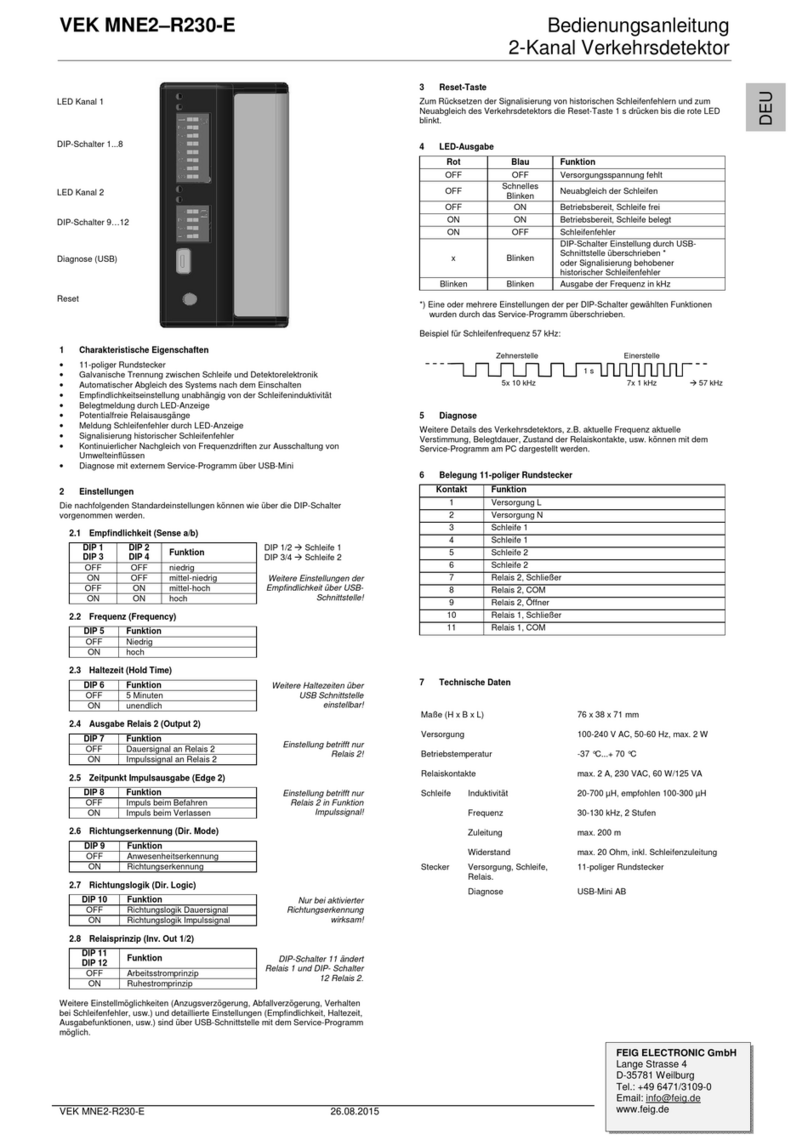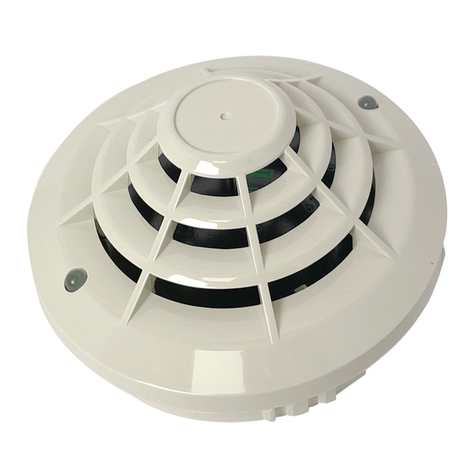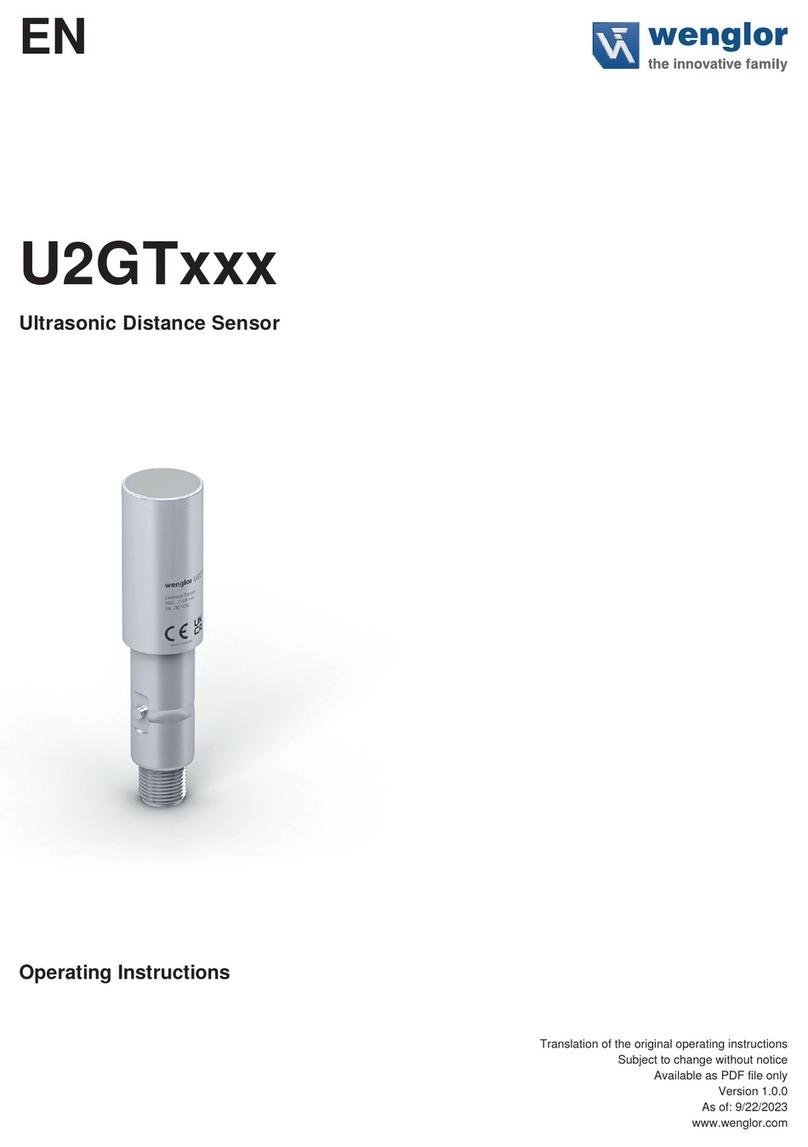Fenwal FenwalNET 2000 User manual

FenwalNETTM 2000
Fire Alarm/Suppression
Control System
Installation, Operation
and Maintenance Manual
Date: May 2001
P/N: 74-200016-001
UL Listing File No: S2422
Factory Mutual pproval J.I. No: 3005511
R
LISTED
TM
R


FenwalNETTM 2000
Fire Alarm/Suppression
Control System
Installation, Operation
and Maintenance Manual

THIS PAGE INTENTIONALLY LEFT BLANK.

i
Note: This Manual Is To Be Used By Trained Distributors Only
FOREWORD
This manual is intended to clearly and accurately reflect the FenwalNET 2000 Fire Alarm/Suppression Control
System. This pu lication descri es the operation, installation and maintenance for the FenwalNET 2000C Fire
Alarm/Suppression Control System, P/N 74-200000-010.
TERMS AND ABBREVIATIONS
ID - Identification
IRI - Industrial Risk Insurers
N.C.- Normally Closed
N.O.- Normally Open
NR - Not Registered
P/N - Part Num er
PAS - Positive Alarm Sequence
PC - Personal Computer
P.C. Line- Power/Communication Line (RX/TX Loop)
P.S.- Power Supply
RCU- Remote Control Unit
RTC - Real Time Clock
RX/TX - Receive Transmit
UL - Underwriter La oratories
VDC - Voltage Direct Current
ACCEPTANCES APPROVALS AND CERTIFICATIONS
FenwalNET 2000 Single Loop System (P/N 74-200000-501)
UL: Underwriters La oratories Listing File Num er S2422.
FM: Factory Mutual Engineering Corp. (Factory Mutual System) Approval J.I. Num er 3005511.
CSFM: California State Fire Marshal Listing Num er 7165-1076:141
NYC: New York City Listing Num er MEA 454-91-E Vol. VI
FenwalNET 2000 Multi-Loop System (P/N 74-200000-600)
UL: Underwriters La oratories Listing File Num er S2422.
FM: Factory Mutual Engineering Corp. (Factory Mutual System) Approval J.I. Num er 3005511.
CSFM: California State Fire Marshal Listing Num er 7165-1076:141
NYC: New York City Listing Num er MEA 454-91-E Vol. VI
ADA- Americans with Disa ilities Act
AI - Addressa le Contact Input Device
AIM- AnaLASER® Interface Module
AO - Addressa le Relay Output Device
BPM - Beats Per Minute
CCM - Central Control Module
CCP - Central Control Panel
DCC- AnaLASER Detector
EDP- Electronic Data Processing
EOC - Event Output Control
FCPs - Fire Control Panels
FCS- Fenwal Configuration Software
GUI - Graphical User Interface
HSD - AnaLASER II Detector
HSSD- High Sensitivity Smoke Detector
IIM Intelligent Interface Module
I/O - Input/Output

ii
THIS PAGE IS INTENTIONALLY LEFT BLANK.

iii
TABLE OF CONTENTS
Foreword .......................................................................................................................................i
Terms and A reviations ..................................................................................................................i
Appendices .......................................................................................................................................vii
List of Illustrations ...........................................................................................................................viii
List of Ta les....................................................................................................................................x
Safety Summary ...............................................................................................................................xi
PARAGRAPH TITLE PAGE
1 General Information ............................................................................................... 1-1
1-1 Introduction ....................................................................................................................1-1
1-1.1 System Description .........................................................................................................1-1
1-1.2 System Components .......................................................................................................1-1
1-2 Component Description ...................................................................................................1-2
1-2.1 Central Control Module (CCM) ........................................................................................1-2
1-2.2 Display Module ...............................................................................................................1-2
1-2.3 Receiver/Transmitter Module (RX/TX) .............................................................................1-2
1-2.4 Power Supply/Charger Assem ly .....................................................................................1-2
1-2.5 Basic Mother oard..........................................................................................................1-3
1-2.6 Multi-Loop Mother oard .................................................................................................1-3
1-2.7 Input/Output Modules .....................................................................................................1-3
1-2.7.1 Signal Output Module .....................................................................................................1-3
1-2.7.2 Relay Output Module .......................................................................................................1-4
1-2.7.3 Agent Release Output Module ..........................................................................................1-4
1-2.7.4 Intelligent Interface Module (IIM-2000) ............................................................................1-4
1-2.7.5 City Tie Module ...............................................................................................................1-5
1-2.8 Stand y Batteries ...........................................................................................................1-5
1-2.9 Intelligent Loop Devices ...................................................................................................1-5
1-2.9.1 SmartOne Ionization Detectors........................................................................................1-5
1-2.9.2 SmartOne Photoelectric Detectors ...................................................................................1-5
1-2.9.3 SmartOne Heat Detectors ................................................................................................1-5
1-2.10 SmartOne Detector Bases ...............................................................................................1-5
1-2.11 Addressa le Contact Input Devices ..................................................................................1-6
1-2.12 Addressa le Relay Output Devices ...................................................................................1-6
1-2.13 Model DH-2000 Air Duct Housing ...................................................................................1-6
1-2.14 Loop Isolator Devices ......................................................................................................1-7
1-2.15 AnaLASER Interface Module............................................................................................1-7
1-3 System Specification .......................................................................................................1-7
2 Operation ............................................................................................................... 2-1
2-1 Introduction ....................................................................................................................2-1
2-1.1 Modes of Operation .........................................................................................................2-1
2-2 Controls and Indicators ..................................................................................................2-2
2-2.1 LCD Display ...................................................................................................................2-2
2-2.2 Audi le Device ................................................................................................................2-2
2-2.3 Control and Indicator Description ...................................................................................2-2
2-3 System Security .............................................................................................................. 2-2
2-3.1 Levels of Security ............................................................................................................2-2
2-3.2 Default Passwords ..........................................................................................................2-2
2-3.3 Entering Passwords ........................................................................................................2-2
2-4 System Power-Up ............................................................................................................2-2
2-5 System Menus ................................................................................................................2-4
2-5.1 Menu Structure ..............................................................................................................2-4
2-5.2 Accessing the System Menus ...........................................................................................2-4
2-5.3 Exiting the System Menus ...............................................................................................2-4

iv
TABLE OF CONTENTS
PARAGRAPH TITLE PAGE
2-5.4 Menu Functions .............................................................................................................. 2-5
2-5.4.1 Isolate Menu Function ..................................................................................................... 2-5
2-5.4.2 List Menu Function .........................................................................................................2-5
2-5.4.3 Set Menu Function ..........................................................................................................2-5
2-5.4.4 Test Menu Function.........................................................................................................2-5
2-6 Modes of Operation .........................................................................................................2-5
2-6.1 Normal Stand y Mode .................................................................................................... 2-5
2-6.2 Active Alarm Mode ..........................................................................................................2-5
2-6.2.1 Alarm Mode Indications ..................................................................................................2-6
2-6.2.2 Alarm Mode User Action .................................................................................................2-6
2-6.3 Active Supervisory Trou le Mode .................................................................................... 2-6
2-6.3.1 Supervisory Trou le Mode Indication ..............................................................................2-11
2-6.3.2 Supervisory Trou le Mode User Action............................................................................2-11
2-6.4 Active Trou le Mode........................................................................................................ 2-11
2-6.4.1 Trou le Mode Indications ................................................................................................2-12
2-6.4.2 Trou le Mode User Action ...............................................................................................2-12
2-7 Printing Operation ..........................................................................................................2-12
2-8 System Programming ...................................................................................................... 2-12
2-8.1 EOC Programming ..........................................................................................................2-13
2-8.1.1 Listing EOC Programming ...............................................................................................2-13
2-8.2 RTC Programming...........................................................................................................2-13
2-8.2.1 Listing RTC Programming ...............................................................................................2-13
2-8.2.2 Ena le/Disa le RTC Program Line Num ers ....................................................................2-13
2-8.3 Types of Inputs and Outputs ........................................................................................... 2-13
2-8.3.1 System Inputs ................................................................................................................ 2-14
2-8.3.2 Remote Control Unit (RCU) ............................................................................................. 2-14
2-8.3.3 AnaLASER Interface Module Inputs (HSD/DCC) .............................................................. 2-14
2-8.3.4 RX/TX Loops .................................................................................................................. 2-14
2-8.3.5 System Outputs.............................................................................................................. 2-14
2-8.3.6 System I/O Modules ........................................................................................................ 2-14
2-8.4 Addressing I/O Modules ..................................................................................................2-14
2-8.5 Registering I/O Module Assignments................................................................................ 2-15
2-8.5.1 Listing I/O Module Assignment........................................................................................2-15
2-8.6 Addressing RCUs ............................................................................................................2-15
2-8.7 Registering RCUs ............................................................................................................2-15
2-8.7.1 Detector Registration....................................................................................................... 2-16
2-8.7.2 Addressa le Contact Monitor Registration ...................................................................... 2-16
2-8.7.3 Remote Relay Registration ...............................................................................................2-17
2-8.7.4 Listing all Registered RCUs ............................................................................................. 2-17
2-8.7.5 Un-registering RCUs........................................................................................................ 2-17
2-8.8 Registering HSDs (Version 80.X Systems)/DCCs
(Version 60.X through 71.X Systems) and Ena ling the IIM-2000 ....................................2-18
2-8.8.1 Registering HSDs (Version 80.X Systems)/DCCs (Version 60.X through 71.X Systems) ... 2-18
2-8.8.2 Ena le/Disa ling IIM ....................................................................................................... 2-18
3 Functional Description ............................................................................................ 3-1
3-1 Introduction ....................................................................................................................3-1
3-2 Overall Block Diagram Description .................................................................................. 3-1
3-3 FUNCTIONAL DESCRIPTIONS .......................................................................................3-2
3-3.1 Central Control Module ...................................................................................................3-2
3-3.2 Receiver/Transmitter Module (RX/TX) .............................................................................3-3
3-3.3 Power Supply/Charger Assem ly, Revision A ....................................................................3-3
3-3.4 Power Supply/Charger Assem ly, Revision C ....................................................................3-3
3-3.5 Multi-Loop I/O Mother oard............................................................................................ 3-6
3-3.6 Signal Output Module ..................................................................................................... 3-6
3-3.7 Relay Output Module....................................................................................................... 3-7

v
TABLE OF CONTENTS
PARAGRAPH TITLE PAGE
3-3.8 Agent Release Output Module ..........................................................................................3-7
3-3.9 IIM-2000 Module ............................................................................................................3-9
3-3.10 City Tie Module ...............................................................................................................3-9
3-3.11 Field Devices ...................................................................................................................3-10
3-3.12 SmartOne Ionization Detectors........................................................................................3-10
3-3.13 SmartOne Photoelectric Detectors ...................................................................................3-10
3-3.14 SmartOne Heat Detectors ................................................................................................3-11
3-3.15 Addressa le Contact Input Devices ..................................................................................3-11
3-3.16 Addressa le Relay Output Devices ...................................................................................3-11
3-3.17 Model DH-2000 Air Duct Housing ...................................................................................3-12
3-3.18 Loop Isolator Devices ......................................................................................................3-12
3-3.19 AnaLASER Interface Module (AIM) ..................................................................................3-12
4 Maintenance Procedure .......................................................................................... 4-1
4-1 Introduction ....................................................................................................................4-1
4-2 Scheduled Maintenance ...................................................................................................4-1
4-3 Maintenance Procedures ..................................................................................................4-1
4-3.1 Lamp Test ......................................................................................................................4-1
4-3.2 Loop Device Test .............................................................................................................4-1
4-3.3 Battery Test ....................................................................................................................4-2
4-3.4 Walk Test........................................................................................................................ 4-2
4-3.4.1 Walk Testing Detectors ....................................................................................................4-2
4-3.4.2 Walk Test Procedure ........................................................................................................4-2
4-3.5 Alarm Simulation Test (AST) ..........................................................................................4-3
4-3.5.1 AST Procedure ................................................................................................................4-3
4-4 Disarming and Rearming Release Circuits .......................................................................4-3
4-4.1 Disarming Release Circuits .............................................................................................4-4
4-4.2 Arming Release Circuits ..................................................................................................4-4
4-5 Power-Down System ........................................................................................................4-4
4-5.1 Power-Down Procedure ....................................................................................................4-4
4-6 Power-Up System ............................................................................................................4-4
4-6.1 Power-Up Procedure ........................................................................................................4-4
5 Troubleshooting and Corrective Maintenance .......................................................... 5-1
5-1 Introduction ....................................................................................................................5-1
5-2 Standard Fault Isolation Techniques ...............................................................................5-1
5-2.1 Visual Inspection ............................................................................................................5-1
5-2.2 Power Checks ..................................................................................................................5-1
5-3 Trou leshooting ..............................................................................................................5-1
5-4 Removal and Replacement ...............................................................................................5-1
5-4.1 Required Tools ................................................................................................................5-2
5-4.2 Central Control Module ...................................................................................................5-2
5-4.3 RX/TX Module ................................................................................................................5-2
5-4.4 Field Devices ...................................................................................................................5-3
6 Parts List ................................................................................................................ 6-1
6-1 Introduction ....................................................................................................................6-1
7 Installation ............................................................................................................. 7-1
7-1 Introduction ....................................................................................................................7-1
7-2 Materials Required for Installation ..................................................................................7-1
7-3 Installation Procedure for Central Control Panel ..............................................................7-1
7-4 Installation Procedure for Expansion Enclosures .............................................................7-1
7-5 Installation Procedure for I/O Mother oard .....................................................................7-2
7-6 Installation Procedure for RX/TX Module .........................................................................7-2
7-7 Installation of I/O Modules ..............................................................................................7-3

vi
TABLE OF CONTENTS
PARAGRAPH TITLE PAGE
7-7.1 Signal Audi le Output Module ........................................................................................7-3
7-7.2 Relay Output Module....................................................................................................... 7-4
7-7.3 Agent Release Module ...................................................................................................... 7-4
7-7.4 City Tie Output Module ...................................................................................................7-4
7-7.5 IIM-2000 Intelligent Interface Module ...............................................................................7-4
7-7.6 Power Supply/Charger Assem ly .....................................................................................7-4
7-7.7 Power Supply/Charger Assem ly, Expansion Enclosure ................................................... 7-4
7-7.8 Power Supply Communication Connections .....................................................................7-6
7-8 Connection AC Power ...................................................................................................... 7-6
7-9 Install and Connect DC Power .........................................................................................7-7
7-9.1 Battery Enclosure............................................................................................................7-7
7-9.2 Batteries ......................................................................................................................... 7-7
7-10 Field Device Connection to RX/TX Module ........................................................................ 7-7
7-10.1 Wiring the RX/TX PC Line ...............................................................................................7-7
7-11 Output Signal Connection ...............................................................................................7-9
7-12 External Power Failure Indicator Connection ....................................................................7-9
7-13 Detector Installation........................................................................................................ 7-10
7-14 Setting and Adjusting Smoke and Heat Detector Sensitivities .......................................... 7-10
7-14.1 Setting And Adjusting Smoke and Heat Detector Sensitivity Procedure ............................7-10
7-15 Addressa le Contact Input Device Installation .................................................................7-10
7-16 Addressa le Relay Output Device Installation ..................................................................7-11
7-17 Installation Checkout ...................................................................................................... 7-11
7-18 Connection of Peripherals ................................................................................................7-11
7-18.1 Connecting a Terminal or Personal Computer ..................................................................7-11
7-18.2 Connecting a Printer........................................................................................................ 7-11

vii
A Power Supply Requirments .............................................................................................A-1
B System Expansion ..........................................................................................................B-1
C Releasing Applications ....................................................................................................C-1
D Not Used.........................................................................................................................D-1
E Factory Mutual Sprinkler Requirements ..........................................................................E-1
F Glossary .........................................................................................................................F-1
G Display A reviations .....................................................................................................G-1
H Index ..............................................................................................................................H-1
I System Drawings ............................................................................................................I-1
J FenwalNET Network Interface Card .................................................................................J-1
K Addressa le Signal/Sounder Module ...............................................................................K-1
L Remote Display Control Module and Remote Display Module ...........................................L-1
M Addressa le AlarmLine Module.......................................................................................M-1
N Networka le Central Control Module ...............................................................................N-1
O Central Station Operation ...............................................................................................O-1
APPENDICES
APPENDIX TITLE PAGE

viii
LIST OF ILLUSTRATIONS
FIGURE TITLE PAGE
1-1 FenwalNET 2000 System, Overall Diagram ...................................................................... 1-D
1-2 Central Control Module (CCM) ........................................................................................1-2
1-3 Display Module Assem ly ...............................................................................................1-2
1-4 Receiver/Transmitter Module (RX/TX) .............................................................................1-2
1-5 Power Supply/Charger Assem ly .....................................................................................1-3
1-6 Basic I/O Mother oard .................................................................................................... 1-3
1-7 Multi-Loop I/O Mother oard............................................................................................ 1-3
1-8 Signal Output Module ..................................................................................................... 1-4
1-9 Relay Output Module ....................................................................................................... 1-4
1-10 Agent Release Output Module .......................................................................................... 1-4
1-11 IIM-2000 Intelligent Interface Module ...............................................................................1-5
1-12 City Tie Module............................................................................................................... 1-5
1-13 Battery Enclosure............................................................................................................1-5
1-14 SmartOne Detection Device ............................................................................................. 1-5
1-15 4-inch Detector Base ....................................................................................................... 1-6
1-16 6-inch Detector Base ....................................................................................................... 1-6
1-17 MA-002 Base Adapter ..................................................................................................... 1-6
1-18 Addressa le Contact Input Device ................................................................................... 1-6
1-19 Addressa le Relay Output Device .................................................................................... 1-6
1-20 Air Duct Housing ............................................................................................................1-6
1-21 Loop Isolator, Stand-Alone .............................................................................................. 1-7
1-22 Loop Isolator, RX/TX Mount ............................................................................................ 1-7
1-23 Loop Isolator, 6" Detector Base Mount .............................................................................1-7
1-24 AnaLASER Interface Module for the AnaLASER Detector .................................................1-7
1-25 AnaLASER Interface Module for the AnaLASER II Detector ..............................................1-7
2-1 System Front Panel .........................................................................................................2-1
2-2 Level One Menu Structure ...............................................................................................2-7
2-3 Level Two Menu Structure ...............................................................................................2-8
3-1 Overall Block Diagram, Single-Loop System .....................................................................3-1
3-2 Overall Block Diagram, Multi-Loop System ...................................................................... 3-1
3-3 Central Control Module, Details ......................................................................................3-2
3-4 Receiver/Transmitter Module, Details ..............................................................................3-4
3-5 O solete Power Supply/Charger Assem ly (Revision A), Details .......................................3-5
3-6 Power Supply/Charger Assem ly (Revision C), Details ..................................................... 3-5
3-7 Multi-Loop I/O Mother oard, Details ...............................................................................3-6
3-8 Signal Output Module, Details ........................................................................................3-8
3-9 Relay Output Module, Details .......................................................................................... 3-8
3-10 Agent Release Output Module, Details .............................................................................3-9
3-11 Intelligent Interface Module - 2000................................................................................... 3-9
3-12 City Tie Module, Details ..................................................................................................3-10
3-13 Typical Detector .............................................................................................................. 3-10
3-14 Addressa le Contact Input Device ................................................................................... 3-11
3-15 Addressa le Relay Output Device .................................................................................... 3-11
3-16 DH-2000 Air Duct Housing ............................................................................................. 3-12
3-17 Loop Isolator, RX/TX Mount ............................................................................................ 3-12
3-18 Loop Isolator, Stand-Alone .............................................................................................. 3-12
3-19 Loop Isolator, 6" Detector Base Mount .............................................................................3-12
3-20 AnaLASER Interface Module for AnaLASER Detectors ..................................................... 3-13
3-21 AnaLASER Interface Module for AnaLASER II Detectors .................................................. 3-13

ix
LIST OF ILLUSTRATIONS
FIGURE TITLE PAGE
5-1 Installation for Single Loop .............................................................................................5-2
5-2 Installation for Multi-Loop ..............................................................................................5-2
7-1 CCP Installation Drawing ................................................................................................7-1
7-2 Back Plate, I/O Mother oard & 4 P.S. ..............................................................................7-2
7-3 Back Plate, 8 P.S. ............................................................................................................ 7-2
7-4 Back Plate, 2 I/O Mother oard ........................................................................................7-2
7-5 Installation for Multi-Loop ..............................................................................................7-3
7-6 Power Supply/Charger (Rev A), Wiring Diagram ...............................................................7-5
7-7 Power Supply/Charger (Rev C), Wiring Diagram ...............................................................7-5
7-8 Power Supply/Charger (Rev A), Wiring Diagram for Expansion Enclosure .........................7-5
7-9 Power Supply/Charger (Rev C), Wiring Diagram for Expansion Enclosure .........................7-5
7-10 Battery Enclosure............................................................................................................7-7
7-11 Conduit to CCP ...............................................................................................................7-8
7-12 Shielded Wire to CCP ......................................................................................................7-8
7-13 Style 4, RX/TX PC Line Connections ................................................................................7-8
7-14 Style 6, RX/TX PC Line Connections ................................................................................7-8
7-15 Style 6, RX/TX PC Line Connections with Loop Isolators .................................................7-9
7-16 Style 7, RX/TX PC Line Connection ..................................................................................7-9
7-17 CCM Printer Port ............................................................................................................7-12

x
LIST OF TABLES
TABLES TITLE PAGE
1-1 System Specifications ..................................................................................................... 1-8
2-1 Controls and Indicators ..................................................................................................2-3
2-2 Isolate Menu Function ..................................................................................................... 2-9
2-3 List Menu Function .........................................................................................................2-9
2-4 Set Menu Function ..........................................................................................................2-10
2-5 Test Menu Function.........................................................................................................2-11
3-1 Multi-Loop I/O Mother oard Connectors.......................................................................... 3-6
3-2 Approved Release Output Devices .................................................................................... 3-7
5-1 Trou leshooting Index ..................................................................................................... 5-1
5-2 RX/TX Configuration Selection ........................................................................................5-3
6-1 FenwalNET 2000 System Parts List ................................................................................ 6-1
7-1 RX/TX Configuration Selection ........................................................................................7-3
7-2 Aux Power Supply Module Connections to Rev A, Main
Power Supply/Charger Assem ly .....................................................................................7-6
7-3 Aux Power Supply Module Connections to Rev C, Main
Power Supply/Charger Assem ly .....................................................................................7-6

xi
SAFETY SUMMARY
Installation Precautions Adherence to the following will aid in pro lem-free installation with long-term relia ility:
WARNING
!
Several different sources of power can be connected to this fire alarm control panel. Disconnect all
sources of power before servicing. Control unit and associated equipment may be damaged by removing
and/or inserting cards modules or interconnecting cables while the unit is energized. Do not attempt
to install service or operate this unit until this manual is read and understood.
CAUTION
!
System Re-acceptance Test after Software Changes: To ensure proper system operation this product
must be tested in accordance with NFPA - 1999 Chapter 7 after any programming operation or change
in site-specific software. Re-acceptance testing is required after any change addition or deletion of
system components or after any modification repair or adjustment to system hardware or wiring.
All components, circuits, system operations, or software functions known to e affected y a change must e 100%
tested. In addition, to ensure that other operations are not inadvertently affected, at least 10% of initiating devices
that are not directly affected y the change, up to a maximum of 50 devices, must also e tested and proper system
operation verified.
This system meets NFPA requirements for operation at 0 to 49° C and at a relative humidity of 85% RH (non-
condensing) @ 30°C. However, the useful life of the systems stand y atteries and the electronic components may
e adversely affected y extreme temperature ranges and humidity. Therefore, it is recommended that this system
and its peripherals e installed in an environment with a nominal room temperature of 60-80°F.
Like all solid state electronic devices, this system may operate erratically or can e damaged when su jected to
lightning induced transients. Although no system is completely immune from lightning transients and interference,
proper grounding will reduce suscepti ility. The use of overhead or outside aerial wiring is not recommended
due to the increased susceptibility to nearby lightning strikes. Consult with the Applications Engineering
Department if any pro lems are anticipated or encountered.
Disconnect AC power and atteries prior to removing or inserting circuit oards. Failure to do so can damage
circuits.
Remove all electronic assem lies prior to any drilling, filing, reaming, or punching of the enclosure. When possi le,
make all ca le entries from the sides. Before making modifications, verify that they will not interfere with attery
and printed circuit oard location.
Do not over tighten screw terminals, over tightening may damage threads, resulting in reduced terminal contact
pressure and difficult with screw terminal removal.
This system contains static-sensitive components. Always ground yourself with a proper wrist strap efore han-
dling any circuits so that static charges are removed from the ody. Use static suppressive packaging to protect
electronic assem lies removed from the unit.
Follow the Instructions in the installation, operating, and programming manuals. These instructions must e
followed to avoid damage to the control panel and associated equipment. FN-2000 operation and relia ility depend
upon proper installation.
Fire Alarm System Limitations: While installing a fire alarm system may make lower insurance rates pos-
sible, it is not a substitute for fire insurance!
An automatic fire alarm system - typically made up of smoke detectors, heat detectors, manual pull stations, audi le
warning devices, and a fire alarm control with remote notification-capa ility can provide early warning of a develop-
ing fire. Such a system, however, does not assure protection against property damage or loss of life resulting from a
fire.

xii
Any fire alarm system may fail for a variety of reasons:
Smoke detectors may not sense fire where smoke cannot reach the detectors such as in chimneys, in walls, or
roofs, or on the other side of closed doors. Smoke detectors also may not sense a fire on another level or floor of
a uilding. A second floor detector, for example, may not sense a first floor or asement fire. Furthermore, all
types of smoke detectors - oth ionization and photoelectric types, have sensing limitations. No type of smoke
detector can sense every kind of fire caused y carelessness and safety hazards like smoking in ed, violent
explosions, escaping gas, improper storage of flamma le materials, overloaded electrical circuits, children play-
ing with matches, or arson.
Audi le warning devices such as ells may not alert people if these devices are located on the other side of closed
or partly open doors or are located on another floor of a uilding.
A fire alarm system will not operate without electrical power. If AC power fails, the system will operate from
stand y atteries only for a specified time.
Rate-of-Rise heat detectors may e su ject to reduced sensitivity over time. For this reason, the rate-of-rise
feature of each detector should e tested at least once per year y a qualified fire protection specialist.
Auxiliary Equipment used in the system may not e technically compati le with the control panel. It is essential
to use only equipment listed for service with your control panel.
Telephone lines needed to transmit alarm signals from a premise to a central monitoring station may e out of
service or temporarily disa led.
The most common cause of fire alarm malfunctions, however, is inadequate maintenance. All devices and system
wiring should e tested and maintained y professional fire alarm installers following written procedures supplied
with each device. System inspection and testing should e scheduled monthly or as required y National and/or
local fire codes. Adequate written records of all inspections should e kept.
GENERAL SAFETY NOTICES. THE FOLLOWING MUST BE OBSERVED TO MAINTAIN PERSONNEL SAFETY.
The following general safety notices supplement specific warnings and cautions appearing in the manual. The safety
precautions in this section must e understood and applied during operation and maintenance. This manula is to
e used y trained distri utors/technicians. The entire manual should e read and fully understood prior to instal-
lation.
Test Equipment
Make certain test equipment is in good operating condition. Do not touch live equipment or personnel working on
live equipment while holding a test meter. Some types of measuring devices should not e grounded; these devices
should not e held when taking measurements.
First Aid
Any injury, no matter how slight, should never go unattended. Always o tain first aid or medical attention immedi-
ately.
GENERAL PRECAUTIONS
The following general safety precautions are to e o served at all times:
1. All electrical components associated with equipment shall e installed and grounded in accordance with NEC,
NFPA and local regulation requirements.
2. Special precautionary measures are essential to prevent applying power to equipment at any time maintenance
work is in progress.
3. Before working on electrical equipment, use a voltmeter to ensure that system is not energized.
4. When working near electricity, do not use metal rules, flashlights, metallic pencils, or any other o jects having
exposed conductive material.
5. When connecting a meter to terminals for measurement, use range higher than expected voltage.

xiii
THIS PAGE IS INTENTIONALLY LEFT BLANK.

FenwalNET 2000
74-200016-001 1-D May 2001
Figure 1-1. FenwalNET 2000 System, Overall Diagram

74-200016-001 1-1 May 2001
FenwalNET 2000
CHAPTER 1
GENERAL INFORMATION
1-1 INTRODUCTION
This manual contains the operation, maintenance,
trou leshooting, parts listing and installation informa-
tion necessary to support the FenwalNETTM 2000 Fire
Alarm/Suppression Control system (hereinafter referred
to as the FenwalNET 2000 system).
Note: This manual is to e used y trained distri u-
tors only. The entire manual should e read and
fully understood prior to installation.
1-1.1 System Description
The FenwalNET 2000 is a fire alarm/suppression con-
trol system which can e used for Local, Auxiliary, Re-
mote Protective Signaling and Releasing Device service.
The system is a microprocessor ased design for use
with intelligent detectors and loop devices.
The system utilizes distri uted Intelligent field devices.
These devices are typically smoke detectors, contact in-
put devices relay outputs and signal output modules
which represent a single fire alarm initiation/indicating
zone. Each device contains its own data transceiver,
micro controller, 4k of memory and applica le algo-
rithms which allows each device to operate independent
of the control system. These unique devices have the
a ility to analyze information, make decisions and store
information within themselves. They communicate with
the FenwalNET 2000 system using the FenwalNET BIP
protocol which utilizes a two-wire (Style 4), four-wire
(Style 6) or isolated (Style 7) multiplex trunk. The
FenwalNET 2000 can support up to 255 device ad-
dresses per loop with a maximum of 8 loops for a total
of 2040 Intelligent device points per system.
The FenwalNET 2000 is capa le of controlling a wide
variety of auxiliary devices such as relays, audi le vi-
sual indicating signal devices and agent/sprinkler release
systems. The system also supports the use of serial
printers which provide hard copy of system status in-
formation.
There are three versions of the FenwalNET 2000 cur-
rently in service. These three versions are identified as:
Pre-network,
Networka le, and
Networka le and compati le with AnaLASER II.
Pre-networked systems have operating firmware in the
Central Control Module (CCM) that ranges from Ver-
sion 48.0 to Version 61.1.
Networka le systems have a modified CCM that can
accept a Network Interface Card (NIC) for peer-to-peer
control unit operations, and can accommodate Remote
Display Modules and Remote Display Control Modules.
Networka le systems have CCM firmware that ranges
from Version 70.0 to Version 71.0.
Networka le systems that are compati le with AnaLA-
SER II air-sampling systems have Version 80.X CCM
firmware.
1-1.2 System Components
The system is comprised of three major components as
shown in Figure 1-1: the Central Control Panel (CCP)
communicates with the field devices and drives output
devices such as alarm signals that communicate with
central stations and various types of control equipment;
a display panel located on the CCP provides system sta-
tus LEDs, Control Switches; and a 80-character LCD
for alphanumeric display of system status information.
The Single Loop FenwalNET 2000 Central Control Panel
(P/N 74-200000-001) consists of the Central Control
Module (CCM) assem ly, one Receiver/Transmitter (RX/
TX) module and one Power Supply assem ly. Option-
ally the system can add a mother oard assem ly which
allows the installation of optional output modules. An
auxiliary power supply module can e added which in-
creases the ase system power supply capacity to 8.0
Amps of 24 Vdc power.
In Multi-Loop form, the FenwalNET 2000 ML Panel
(P/N 74-200000-100) consists of a CCM, one power-
supply assem ly, one RX/TX module and one Multi-Loop
mother oard mounted in the enclosure. The unique
multi-loop mother oard provides the a ility to connect
up to 8 RX/TX modules to the system allowing a full
2040 addressa le points to e connected to the
FenwalNET 2000 ML System.
Auxiliary enclosures are availa le to allow the system
to e expanded. The auxiliary enclosure has the same
dimensions as that of the main enclosure with the a -
sence of the window in the door. There are optional ack
planes that are installed in the expansion enclosure
which allow the num er of I/O modules and system
power supplies to e expanded. To allow for maximum
system flexi ility, expansion enclosure(s) and
ackplane(s) can e added to the system. Refer to Ap-
pendix B for further system expansion details.

May 2001 1-2 74-200016-001
FenwalNET 2000
TM
R
SILENCE
SUPERVISORY
TROUBLE
SCROLL
RESET
PRE-ALARM
ALARM
POWER ON
System Status
ACKNOWLEDGE
SILENCE
7
0
89
1
4
23
56
Figure 1-3. Display Module Assem ly
1-2.3 Receiver/Transmitter Module (RX/TX)
The RX/TX functions as the hardware and software in-
terface etween the field devices and the CCM. The RX/
TX receives control requests from the CCM and esta -
lishes communications with the field devices. The RX/
TX receives status changes from the field devices and
reports these changes to the CCM. The RX/TX shown in
Figure 1-4 is capa le of communicating with up to 255
intelligent devices and complies with the wiring require-
ments of NFPA Style 4, 6 and 7 (with the use of the loop
isolator device). Style 4 initiation circuit wiring will per-
mit T tapping or ranch circuitry.
1-2.4 Power Supply/Charger Assem ly
The power supply/charger assem ly (P/N 74-200009-
010) is comprised of a printed circuit oard (PCB)
assem ly and a AC/DC switching power supply unit.
The switching power supply unit provides 4 Amps of
24 Vdc power from the 120/240 Vac input power. The
PCB assem ly is a microprocessor ased unit which
provides the system with:
Battery charging and supervision
AC power supervision
24 Vdc supervision
Battery load test
24 Vdc ground fault detection (+/-)
Auxiliary 24 Vdc outputs
Loop Isolator
for Style 7
Figure 1-4. Receiver/Transmitter Module (RX/TX)
1-2 COMPONENT DESCRIPTION
The following paragraphs give a rief description of each
components used in the FenwalNET 2000 system. For
functional descriptions of each component, see Chapter
3 of this manual.
1-2.1 Central Control Module (CCM)
The CCM assem ly, Figure 1-2, is the heart of the sys-
tem and is comprised of two PCB assem lies, the dis-
play module and the main processor module. The CCM
controls the operation and supervision of all the sys-
tem modules and software within the FenwalNET 2000
system. It receives loop device data from the RX/TX
module, processes the data ased on pre-programmed
instructions and transmits output commands to the
output modules, field devices and display module(s).
1-2.2 Display Module
The display module assem ly (Figure 1-3), which is at-
tached to the main processor PCB, provides the system
with the operator interface for control switches, system
status LEDs, system trou le/alarm uzzer, an 80-char-
acter (2 x 40) LCD display and an integral numeric key-
pad. The keypad is used for entering the security
password and navigating through the user menus. The
system uzzer provides two distinctly different signal-
ing patterns for audi le warning of system alarms and
trou les.
Figure 1-2. Central Control Module (CCM)
Other Fenwal Security Sensor manuals
Popular Security Sensor manuals by other brands

THORLABS
THORLABS PDB47 C Series Operation manual

SkyLink
SkyLink ID-318 Guide manual
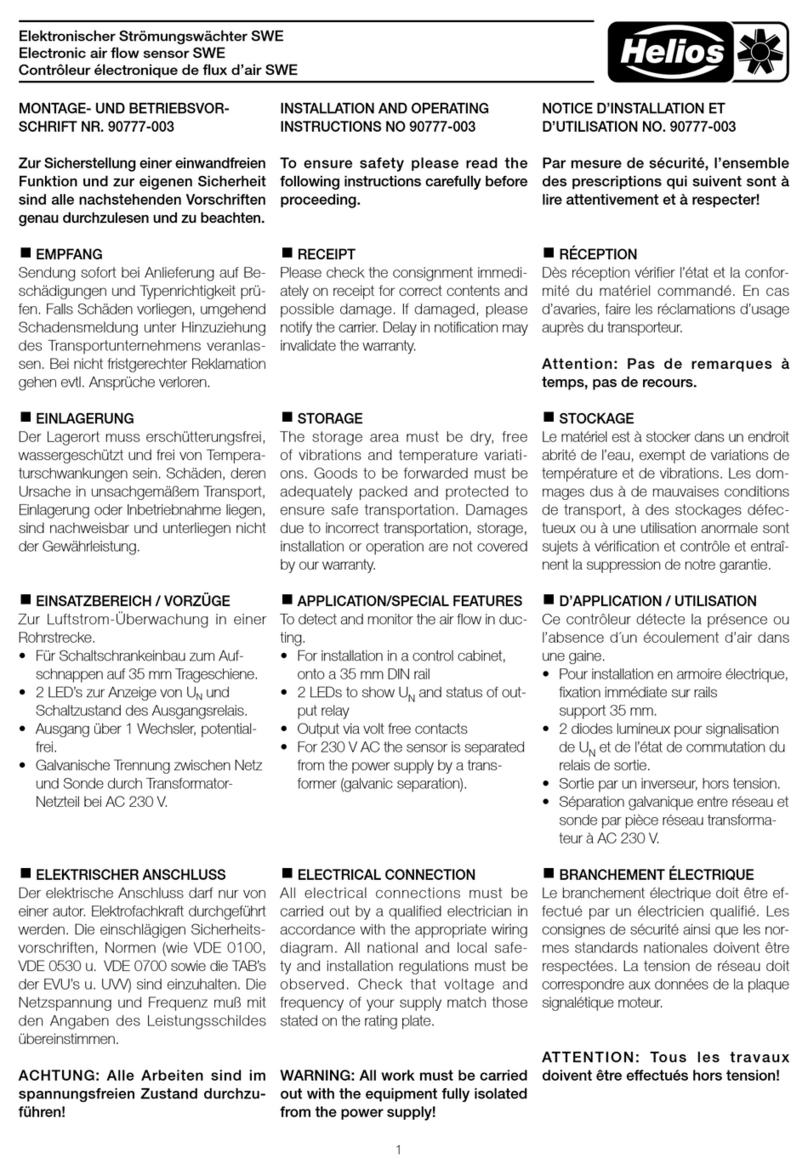
Helios
Helios SWE Installation and operating instructions

X-Stand
X-Stand FREEDOM HARNESS Assembly and user's manual
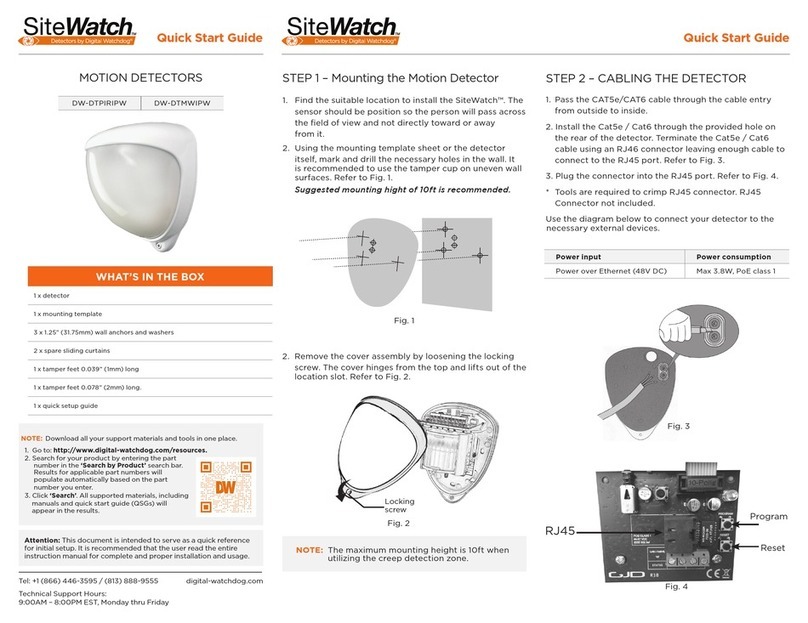
Digital Watchdog
Digital Watchdog SiteWatch DW-DTPIRIPW quick start guide
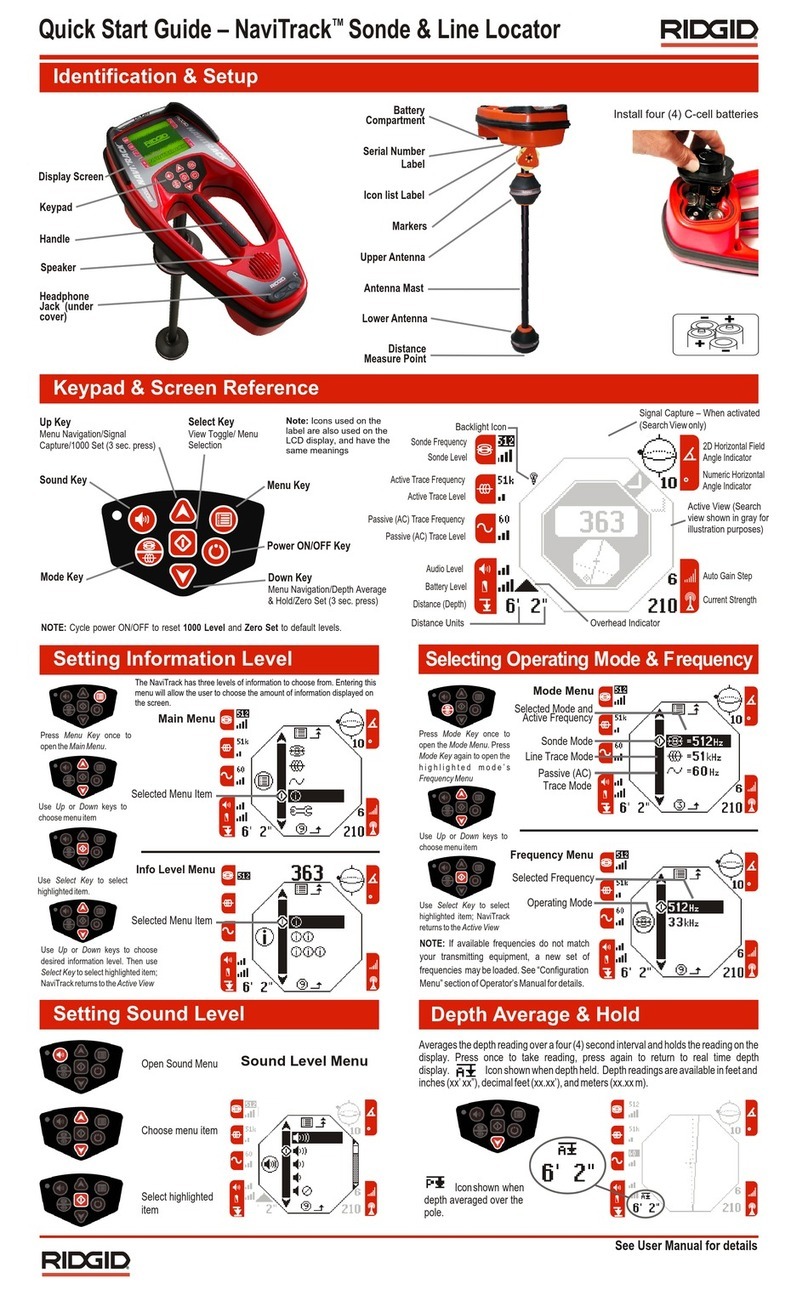
RIDGID
RIDGID NAVITRACK quick start guide

